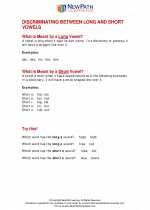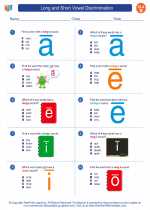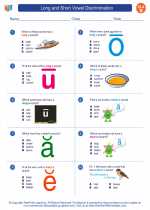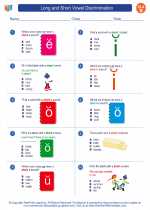Long and Short Vowel Discrimination
Long and short vowel discrimination is an important concept in phonics and reading for young learners. Understanding the difference between long and short vowel sounds is essential for developing strong phonemic awareness and decoding skills.
Long Vowel Sounds
A long vowel sound is the sound that a vowel makes when it says its name. For example, the letter 'a' makes the long /ā/ sound in words like "cake" and "rain."
Short Vowel Sounds
A short vowel sound is the sound that a vowel makes when it does not say its name. For example, the letter 'a' makes the short /ă/ sound in words like "cat" and "hat."
How to Discriminate Between Long and Short Vowels
There are several strategies and activities that can help students discriminate between long and short vowel sounds:
- Listening for the difference in sound when pronouncing words with long and short vowels.
- Using visual aids such as flashcards or word cards with long and short vowel words.
- Engaging in word sorts where students categorize words based on their vowel sounds.
- Practicing with word games and activities that reinforce long and short vowel discrimination.
Study Guide
Here are some tips and activities to help students practice long and short vowel discrimination:
- Listen to and repeat words with long and short vowel sounds.
- Sort words into categories based on their vowel sounds.
- Play games such as bingo or memory matching with long and short vowel words.
- Read books and stories that emphasize long and short vowel sounds.
- Use online resources and interactive activities to reinforce long and short vowel discrimination skills.
By practicing these strategies and activities, students can improve their ability to discriminate between long and short vowel sounds, which will in turn enhance their reading and phonics skills.
[Long And Short Vowel Discrimination] Related Worksheets and Study Guides:
.◂English Language Arts Worksheets and Study Guides Second Grade. Long and Short Vowel Discrimination

 Worksheet/Answer key
Worksheet/Answer key
 Worksheet/Answer key
Worksheet/Answer key
 Worksheet/Answer key
Worksheet/Answer key
